|
Rosemary Sutcliff1920-1992by Anne McFadgen ("Annis")
As gold is tempered by fire, so a strong spirit is tempered by adversity -- Seneca
Apart from the stories written for very young children, like The Armourer's House Why do Sutcliff’s stories linger as a shining memory for a whole generation of readers? I decided to revisit her work as an adult and consider what it was about this remarkable woman that enabled her to inspire so many children with an enduring love of history, heroic fantasy, mythology and legend.
Any attempt to understand Rosemary Sutcliff and the influences on her work must start with her autobiography, Blue Remembered Hills . A virulent form of juvenile arthritis attacked her at the age of two, leaving her disabled and requiring many painful operations throughout her life. Her disability made her a lonely child. Much of her childhood she spent with only her mother for company. Outcast is one of several of her novels Sutcliff didn’t learn to read until she was nine, but her mother read to her tirelessly: classics like Dickens and Kipling, and myths and legends from collections like Maud Isabel Ebbutt’s Hero-Myths and Legends of the British Race. Sutcliff felt a particular affinity with Rudyard Kipling. His work, especially his collected stories Puck of Pook’s Hill, aroused her interest in the way a conquered land can become “heart-home” to its conquerors, as seen in The Eagle of the Ninth and epitomised by Kipling’s poem “The Roman Centurion’s Song”. She borrowed the concept of inter-connected
When it came to inspiration for her stories, Sutcliff was a veritable magpie. A Roman artefact, the wingless Silchester Eagle, helped spark The Eagle of the Ninth and its sequel, The Silver Branch (“I’ve been fascinated by it [the Eagle] since I was five”, she said). The Eagle of the Ninth also saw Esca, hero of a much-loved childhood story (George Whyte-Melville’s The Gladiators), find new life as Marcus Flavius Aquila’s loyal British slave companion. The White Horse of Uffington, an ancient landmark near her West Sussex home at Walberton, became Sun Horse, Moon Horse. Shield Ring had its origins in a dusty little history of Buttermere found in an attic (Nicholas Size’s The Secret Valley). Welsh bard Aneirin’s Dark Age elegy Y Goddodin gave rise to The Shining Company. Snippets gleaned from her wide circle of friends, correspondents and advisors on specialist subjects took root in her imagination. A copy of Francis Brett Young’s poem "Hic Jacet Arthurus Rex Quondam Rexque Futurus", sent by a Canadian friend who thought it might appeal, fanned the flame of an already half-formed desire to write a novel about the historical Arthur (Sword at Sunset). The story of Scottish soldier Thomas Keith, hero of Blood and Sand, was picked up from historian Michael Starforth; the desperate Roman retreat to safety through a gauntlet of hostile Celtic warriors in Frontier Wolf inspired by a heroic British retreat during the Third Anglo-Afghan War described by Wallace Breem, fellow historical novelist and former Indian Army Frontier Scout. Admired historical figures made many a starting point for a story. Some are well-known: brilliant, enigmatic Athenian general Alkibiades (the adult novel Flowers of Adonis), Elizabethan courtier and adventurer Sir Walter Raleigh (Lady in Waiting). Others are more obscure: Aud the Deep-Minded (Sword Song), St Augustine of Canterbury (Dawn Wind), John Graham of Claverhouse (Bonnie Dundee), Rahere, twelfth-century founder of London’s St Bartholomew’s Hospital (Witch’s Brat). It’s probable that as a child Sutcliff herself first read about Rahere in Kipling’s Rewards and Fairies, where he steals the scene in the story "Tree of Justice." Parliamentarian general Sir Thomas Fairfax appears twice - as a secondary character in Simon, and again as the hero of Rider on a White Horse, which was a response to her mother’s complaint that so few English Civil War stories featured Roundheads rather than Cavaliers. The recurring archetypes of the universal hero and the sacred king found in ancient Greek, Germanic and Celtic mythology were integral to Sutcliff’s art and proved a constant wellspring. Drawing on motifs central to the Welsh Mabinogion for Sword at Sunset, for example, enabled her to bring a very different perspective to the Arthurian literary tradition; gritty realism given a darkly glowing mythic gravitas. She reworked several favourite legendary tales into versions more accessible for younger readers: The Wanderings of Odysseus and Black Ships before Troy from Homer, Tristan and Iseult, a Breton tale linked to the Arthurian cycle, Beowulf: Dragon-Slayer, based on an Anglo-Saxon epic poem, and The Hound of Ulster It seems likely that Kipling inspired Sutcliff's frequent choice of Roman and post-Roman Britain as settings, although she is equally at home with settings as diverse as ancient Greece and the nineteenth-century Ottoman Empire. Parallels between the British Imperial experience in India and the Roman Empire’s occupation of Britain are clear in Kipling’s writing. Frontier Wolf, set on the Scottish border of fourth century Roman Britain, also echoes themes in George Shipway’s novel of nineteenth century British India, Strangers in the Land, which portrays the irredeemable damage an insensitive Imperial official fresh from the "mother country" wreaks on the delicate understanding established between conqueror and conquered.
Sutcliff focuses on transition and continuity, on the way the land survives as a constant despite the ebb and flow of different civilizations upon it. Generations of men experience in common life and death, the timeless cycle of the seasons, and reverence for the land and the natural world of plants and creatures. The waters of well, river and sea, the presence of sun, moon and stars, wind and rain—even the very light and shadow—fill Sutcliff’s stories with a numinous presence. And nearly always she gives us a glimpse of the land's original inhabitants, the Little Dark People, its guardians and the keepers of earth-magic. Many of her books use a linking device to connect them through the centuries: an artefact, a piece of jewellery like the Capricorn bracelet or the Aquila family's dolphin ring, or a place revisited--most commonly the northern lands bordered by Hadrian’s Wall or Sutcliff’s own heart-home, the Sussex Downs. The Downs are the setting for Knight’s Fee, in which twelfth century Randal holds in his hand an ancient flint axe made for a man “left-handed or one-handed”, and in that haunting moment touches Drem of Warrior Scarlet, its owner in the ninth century B.C.
Rarely, as in Shield Ring, a girl may form half of this partnership, or even more rarely serve as the main protagonist as in Song For A Dark Queen, the story of Queen Boudica of the Iceni. Older women are often kind, but sometimes ominous like the Little Dark Women and stately Celtic Royal Women, imbued with the potentially terrible mystery of the Goddess. It’s possible to see Sutcliff’s manic-depressive mother in this double female aspect, and her father in the strong, sympathetic older men who act as mentors in her stories.
Living with the fear of German invasion during the Second World War seems to underlie Sutcliff's earlier novels dealing with the Saxon invasion of Britain and the heroic defence by the Romano-Britons. In The Silver Branch, published in 1957, relatively soon after the end of the war, the Saxons are depicted as inhuman, yellow-haired, blue-eyed Germanic barbarians, “raging for blood with the savage, wild-beast frenzy of their kind”. In her 1961 novel, Dawn Wind, we begin to see the Saxons as people in their own right and can be shocked when a wolf-pack of British “broken men” boasts with ugly glee of slaughtering a Saxon family. With 1990's Shining Company, Sutcliff has young Prosper feel startled pity when he gazes at a dead Saxon: “For the first time I saw his face. Not a face of the blue-eyed savages we thought of the Saxons as being; blue-eyed, certainly, but just a man’s face, weather-beaten, square cut, neither young nor old, the kind of face one might have thought of as dependable.”
Imagery of plants, birds and animals of mythic significance is woven with subtle intricacy throughout Sutcliff’s stories, becoming particularly apparent at premonitory or pivotal moments: a drift of apple blossom, the scent of mayflower, a golden plover’s feather, a flight of wild swans, a proudly antlered white hart standing in the moonlight. Totemic wolves and horses are a common feature. The white horse has particular symbolism, being sacred to both the Celtic sun god and the horse-goddess Epona, as well as the Saxon god Freyr. In Sun Horse, Moon Horse, a vision of Epona incarnate as a radiant white mare inspires the breath-taking creation of an Icenian artist of the Iron Age, the Uffington White Horse.
Sutcliff's intuitive understanding backed by extensive research gives her stories historical realism and immediacy. She was an artist, and her greatest skill is to make the reader part of the story by involving all the senses, in her own words "every detail of sight and scent and sound
"Rosemary Sutcliff: An Appreciation" by Sandra Garside-Neville, which originally appeared in the Autumn 2000 issue of Solander, a Historical Novel Society publication, and which includes a comprehensive list of references and a bibliography of Sutcliff’s books. "The Dark-Age Novels of Rosemary Sutcliff", a three-part article by Charles W. Evans Gunther on the blog Rosemary Sutcliff: An Appreciation (scroll down for Parts I and II), which discusses Sutcliff's Dark Age novels and mentions her use of the Aquila family dolphin ring as a linking device. "Kipling for Children", a 1965 article by Rosemary Sutcliff for The Kipling Journal, posted by permission on the Rosemary Sutcliff blog run by Sutcliff’s godson, Anthony Lawton. A 1981 article by Rosemary Sutcliff on being a disabled artist, posted on the Rosemary Sutcliff blog. Death of the Corn-King: King and Goddess in Rosemary Sutcliff’s Historical Fiction for Young Adults by Barbara Talcroft (1995), a scholarly study on the use of mythic themes and symbolism in Rosemary Sutcliff’s work, both in general and as they relate to specific titles.
Sandra Garside-Neville's Rosemary Sutcliff: An Appreciation, an article on the blog at blueremembered.blogspot.com Anthony Lawton's Rosemary Sutcliff blog at rosemarysutcliff.com
Top of Page
|
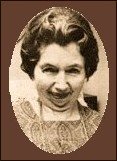 Ask any baby-boomer who loves historical fiction what inspired their appreciation, and chances are the reply will be, “Well, when I was a kid I read Rosemary Sutcliff’s books”. Out of print for years, Sutcliff’s novels are making a comeback as their original readers reach an age when they can influence the reissue of old favourites.
Ask any baby-boomer who loves historical fiction what inspired their appreciation, and chances are the reply will be, “Well, when I was a kid I read Rosemary Sutcliff’s books”. Out of print for years, Sutcliff’s novels are making a comeback as their original readers reach an age when they can influence the reissue of old favourites. 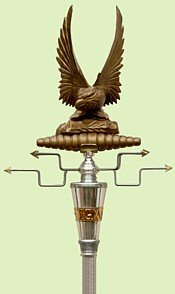 "The Eagle," a movie based on Sutcliff's classic
"The Eagle," a movie based on Sutcliff's classic  about the rejection and isolation felt by outsiders. The theme of triumph over suffering and disability also appears. In
about the rejection and isolation felt by outsiders. The theme of triumph over suffering and disability also appears. In 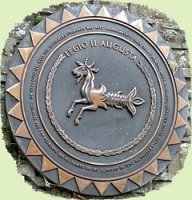 short stories to good effect in
short stories to good effect in 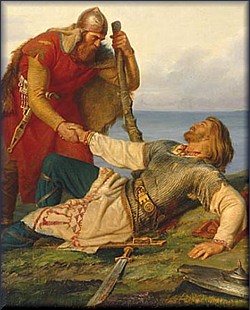 Like Naomi Mitchison, Mary Renault and Bryher, other female historical novelists of the mid twentieth century, Sutcliff typically uses young men for her protagonists, whose freedom to act was denied to girls within their societies. Loyal comradeship is important in her stories, and the central partnership of two friends is a common element; sometimes they are sword-brothers, but always “heart-brothers”, with differences in race or status no barrier to the recognition of a kindred spirit. Although similar partnerships in Renault's
Like Naomi Mitchison, Mary Renault and Bryher, other female historical novelists of the mid twentieth century, Sutcliff typically uses young men for her protagonists, whose freedom to act was denied to girls within their societies. Loyal comradeship is important in her stories, and the central partnership of two friends is a common element; sometimes they are sword-brothers, but always “heart-brothers”, with differences in race or status no barrier to the recognition of a kindred spirit. Although similar partnerships in Renault's 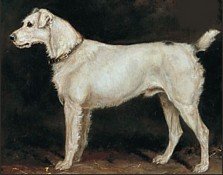 The human-animal partnership is also vital; after reading
The human-animal partnership is also vital; after reading  Sutcliff was much influenced by Frazer’s seminal work of mythic anthropology,
Sutcliff was much influenced by Frazer’s seminal work of mythic anthropology,  This sense of atavistic mystery and connection with all living things exalts Sutcliff’s adventures and can sometimes lift the hair at the back of the reader’s neck. She writes ripping yarns, full of suspense, twists and turns, stirring battles (if you thought Bernard Cornwell was the only author able to vividly recreate battle scenes, think again), peopled by wonderfully real characters who often have to make hard choices. Sutcliff makes no concessions to sentimentality. Warfare can be gloriously heroic, worthy of a bard’s praise-song, but it is also horrific: people we love must die; there will not always be a happy ending. Always there is an intrinsic understanding that the gods rarely grant gifts without exacting a price. Sometimes a sacrifice must be freely offered for the sake of honour and duty, for country, clan, family and friends.
This sense of atavistic mystery and connection with all living things exalts Sutcliff’s adventures and can sometimes lift the hair at the back of the reader’s neck. She writes ripping yarns, full of suspense, twists and turns, stirring battles (if you thought Bernard Cornwell was the only author able to vividly recreate battle scenes, think again), peopled by wonderfully real characters who often have to make hard choices. Sutcliff makes no concessions to sentimentality. Warfare can be gloriously heroic, worthy of a bard’s praise-song, but it is also horrific: people we love must die; there will not always be a happy ending. Always there is an intrinsic understanding that the gods rarely grant gifts without exacting a price. Sometimes a sacrifice must be freely offered for the sake of honour and duty, for country, clan, family and friends.
 jewel-vivid”. We are there, experiencing the terror of a group of Roman soldiers hunted through the night by Germanic tribesmen in
jewel-vivid”. We are there, experiencing the terror of a group of Roman soldiers hunted through the night by Germanic tribesmen in